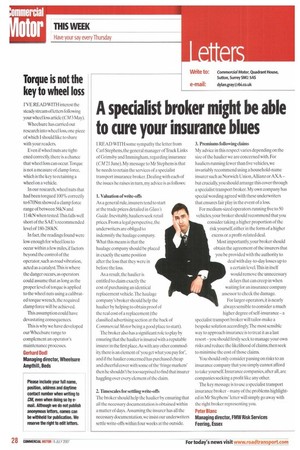Torque is not the key to wheel loss
Page 30

If you've noticed an error in this article please click here to report it so we can fix it.
I'VE READ WITH interest the steady stream of letters following your wheel loss article (CM 3 May), Wheelsure has carried out research into wheel loss, one piece of which I should like to share with your readers.
Even if wheel nuts are tightened correctly, there is a chance that wheel loss can occur.Torque is not a measure of clamp force, which is the key to retaining a wheel on a vehicle.
In our research, wheel nuts that had been torqued 100% correctly to 670Nm showed a clamp force range of between 56kN and 114kN when tested.This falls well short of the SAE's recommended level of 180-280kN.
In fact, the readings found were low enough for wheel loss to occur within a few miles, if factors beyond the control of the operator, such as road vibration, acted as a catalyst.This is where the danger occurs, as operators could assume that as long as the proper level of torque is applied to the wheel nuts using a calibrated torque wrench, the required clamp force will be achieved.
This assumption could have devastating consequences.
This is why we have developed our Wheelsure range to complement an operator's maintenance processes.
Gerhard Dorn Managing director, Wheelsure Ampthill, Beds






























































































































































































